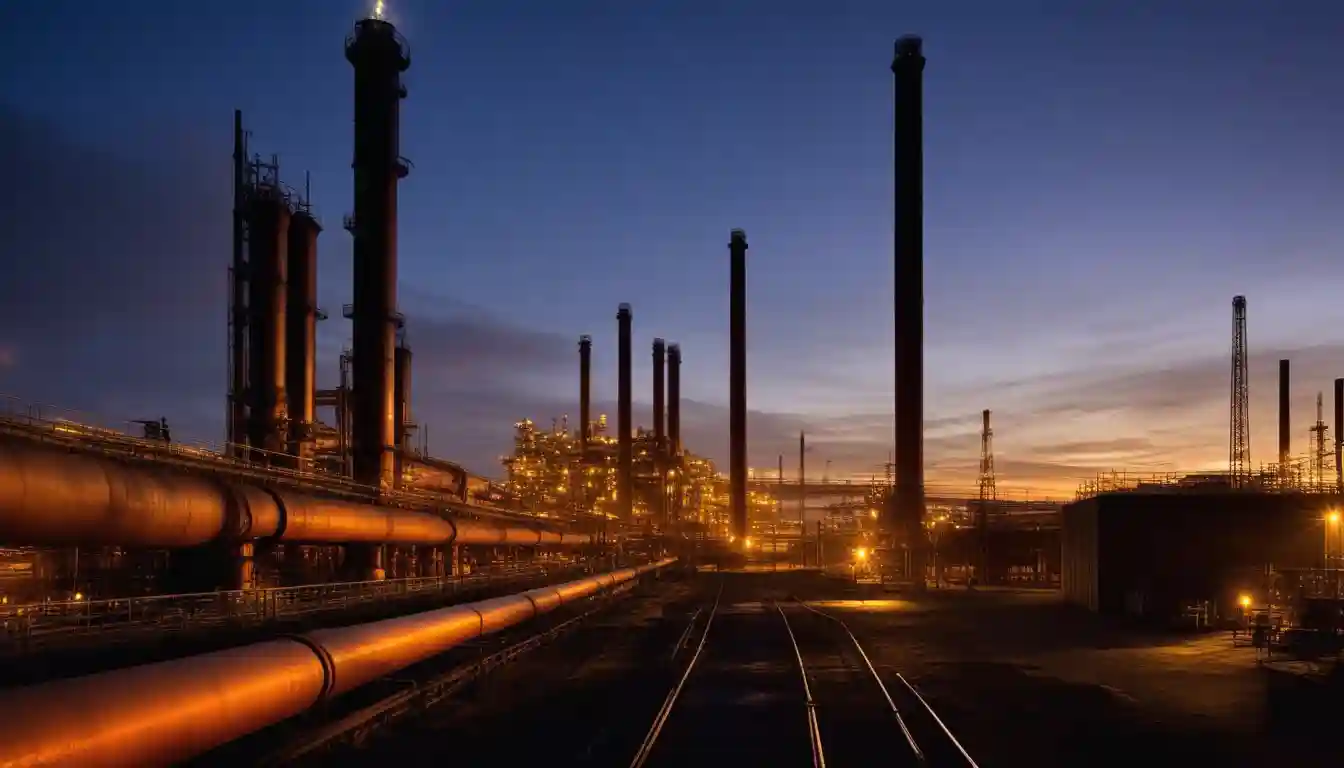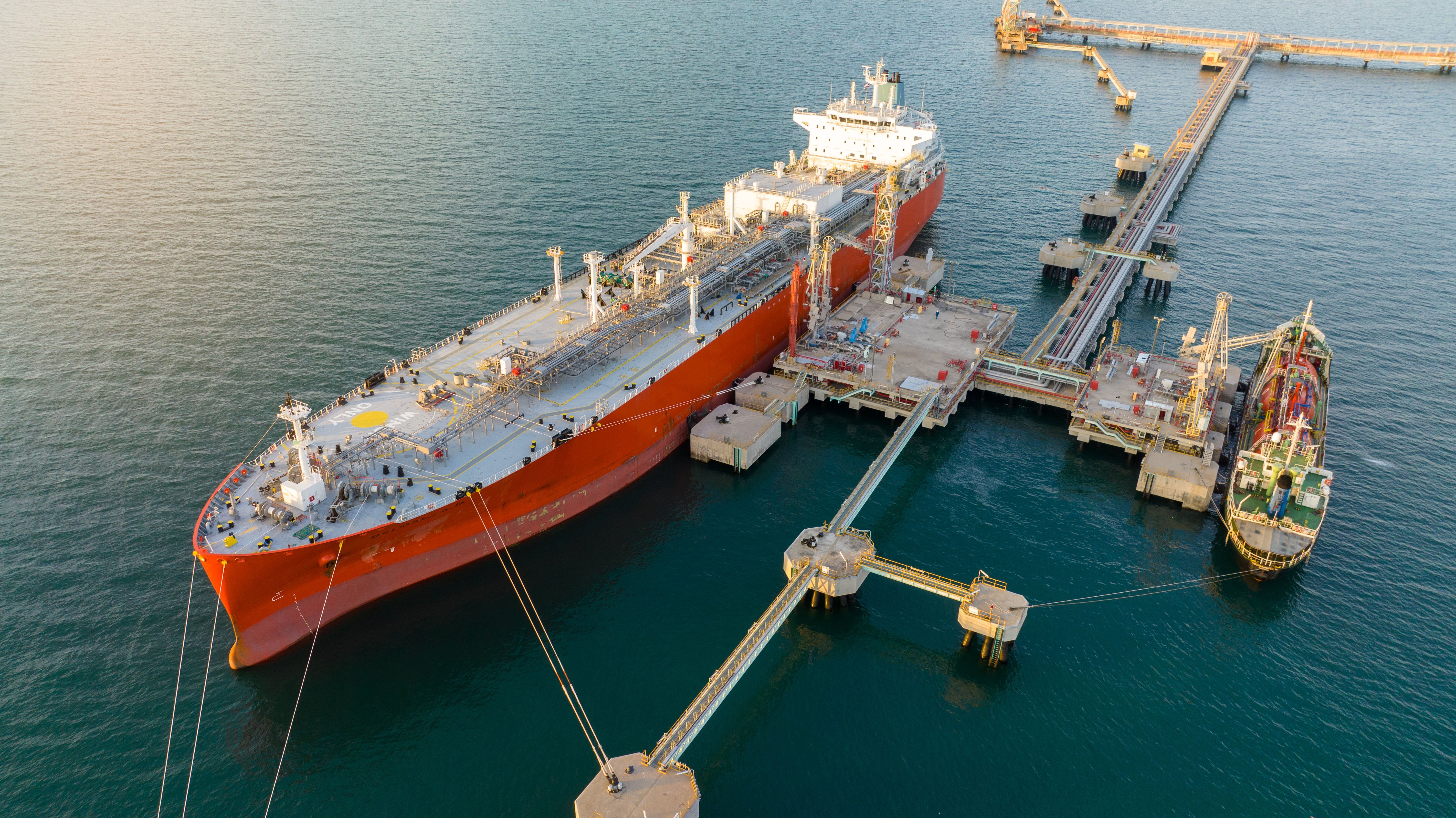
Centrica and Energy Capital Partners Buy UK's Biggest Gas Terminal from National Grid for £1.5 Billion
The Gateway Gambit: How Britain's Energy Sovereignty Hangs in the Balance
A £1.5 billion deal for Europe's largest gas terminal reveals the high-stakes chess game reshaping national energy security
ISLE OF GRAIN, Kent — National Grid's March 2024 announcement to sell its liquefied natural gas terminal marked a pivotal moment in Britain's energy infrastructure landscape.
The Isle of Grain facility processes 15 million tonnes of LNG annually—approximately 20% of the UK's total gas demand. This strategic infrastructure now stands at the center of a £1.5 billion acquisition that exposes the fundamental tensions between commercial efficiency and national energy security.

Centrica, the FTSE 100 owner of British Gas, has entered exclusive negotiations with Energy Capital Partners to acquire Europe's largest LNG import terminal from National Grid. The transaction signals how critical energy infrastructure control has evolved in post-Brexit Britain, where domestic ownership increasingly trumps purely financial considerations.
When Energy Became Warfare
The transformation of Isle of Grain from commercial asset to strategic weapon began at 4:00 AM Moscow time on February 24, 2022. Russia's invasion of Ukraine didn't just redraw European maps—it fundamentally altered the mathematics of energy security.
"Everything changed overnight," reflected one senior energy trader who requested anonymity. "Facilities that were commercial operations suddenly became frontline infrastructure in an economic war."
The numbers illustrate this seismic shift. Before 2022, Russian pipeline gas supplied approximately 40% of European demand. Today, LNG terminals like Isle of Grain process 60% more volume than their pre-war peaks, as Europe scrambled to replace Siberian gas with shipments from American shale fields and Middle Eastern facilities.
Shift in European Gas Supply Sources Pre- and Post-2022
| Source | 2021 (billion cubic meters - bcm) | 2023 (billion cubic meters - bcm) |
|---|---|---|
| Russia (Total) | 150.2 | 42.9 |
| - Pipeline Gas | ~140 (over 40% of imports) | ~43 |
| - Liquefied Natural Gas (LNG) | 17% of LNG imports | 15% of LNG imports |
| United States (LNG) | 18.9 | 56.2 |
| Norway (Pipeline) | 79.5 | 87.8 |
| Total LNG Imports | 80 | 131 |
| North Africa | 44.1 | 41.0 |

Isle of Grain's strategic importance extends beyond its 15 million tonne annual capacity—equivalent to roughly 20 billion cubic meters of gas. Its location transforms it into a continental gateway: sophisticated interconnector pipelines can channel British-imported gas directly into European networks, making Britain both consumer and distributor in the new energy architecture.
The facility's tank farms, each capable of storing enough gas to power London for three days, represent what energy strategists describe as "critical national infrastructure"—assets whose disruption could paralyze entire economies.
Critical National Infrastructure (CNI) refers to the essential assets, systems, and services that are vital for a country to function. These include sectors like energy and transport, which are deemed "critical" because their disruption would have a severe impact on national security, the economy, or public safety.
The Anatomy of Acquisition
Centrica's pursuit reflects a calculated evolution from energy retailer to infrastructure sovereign. The company's existing portfolio reads like a blueprint for vertical integration: the Rough gas storage facility off Yorkshire, a 15% stake in the Sizewell C nuclear project, and now potentially the nation's primary gas import gateway.
This trilogy creates what industry insiders term "system-level optionality"—the ability to optimize energy flows across multiple infrastructure layers. During winter demand peaks, Centrica could theoretically import LNG at Isle of Grain, store it at Rough during low-demand periods, and release it strategically to maximize seasonal pricing arbitrage.

"We're watching the creation of an energy ecosystem where commercial optimization intersects with national security imperatives," observed one infrastructure analyst. "The question is whether that concentration enhances or compromises system resilience."
Energy Capital Partners, through its recent merger with UK-based Bridgepoint, brings crucial credibility to the acquisition. The partnership combines American infrastructure expertise with British regulatory navigation skills—a combination increasingly essential as governments scrutinize foreign ownership of strategic assets.
The Economics of Exclusion
The path to exclusive negotiations revealed the new geopolitics of infrastructure ownership. CKI Infrastructure Holdings, the Hong Kong-listed conglomerate initially considered the frontrunner, withdrew amid growing political sensitivity around foreign control of critical assets.
Similarly, Omers, one of Canada's largest pension funds, abandoned its pursuit despite the terminal's attractive cash flow profile. Their exodus reflects what government sources describe as "heightened scrutiny of non-domestic ownership" of energy infrastructure—a policy shift that effectively created space for the Centrica-led consortium.
National Grid's decision to divest stems from its own strategic recalibration. The utility's March 2024 announcement to sell both the terminal and its US renewable portfolio signals laser focus on electricity transmission networks—infrastructure deemed essential for Britain's net-zero transition.
UK Electricity Generation Mix, showing the growth of renewables and the changing role of gas.
| Source | 2023 (%) | 2024 (%) | Q1 2025 (%) |
|---|---|---|---|
| Gas | 32 | 26 | 38.1 |
| Renewables | 42 | 51 (Zero-Carbon) | 46.3 |
| - Wind | 29.4 | 30 | 28.5 |
| - Solar | 4.9 | 4 | N/A |
| - Biomass | 5 | 13 | N/A |
| Nuclear | 13 | 13 | 15 (Increased) |
| Coal | 1 | 0.6 | 0 |
| Imports | N/A | 11 | -13 (Net) |
The £1.5 billion valuation represents premium pricing for strategic assets, implying an enterprise value-to-earnings multiple of approximately 10-12 times. This premium reflects not just contracted revenue streams but recognition that certain assets transcend traditional financial metrics when they occupy critical positions in national economic security frameworks.
The Concentration Conundrum
The proposed acquisition raises fundamental questions about market structure in Britain's energy landscape. Centrica's expanded portfolio would control critical chokepoints across the gas supply chain—from import terminals through storage facilities to consumer delivery—creating unprecedented vertical integration.
"The concern isn't just about market power, but about system vulnerability," noted one regulatory specialist. "When one entity controls multiple critical nodes, you're trading competitive dynamics for operational efficiency."
Energy market data supports these concerns. Analysis of recent pricing patterns suggests that coordinated management of import capacity and storage resources could enable strategic players to influence wholesale pricing dynamics in ways that ultimately affect consumer costs.
Regulatory approval appears likely, though not without conditions. The government's National Security and Investment Act provides mechanisms for imposing operational constraints, potentially including ring-fencing arrangements and non-discriminatory access requirements that could limit strategic synergies while preserving national security interests.
The UK's National Security and Investment Act 2021 (NSIA) grants the government significant powers to scrutinize and intervene in investments and acquisitions that could harm national security. This legislation requires investors to notify the government of transactions in 17 sensitive sectors, allowing officials to impose conditions or even block deals to protect the UK.
The Investment Arithmetic
From a financial perspective, the terminal represents access to contracted, inflation-linked cash flows in an era of extreme energy price volatility. The facility operates under long-term terminal use agreements with major suppliers including Algeria's Sonatrach and US exporter Venture Global, providing revenue visibility extending into the 2040s.
Market analysis suggests the terminal could generate annual earnings before interest, taxes, depreciation, and amortization in the range of £125-170 million, based on current capacity utilization and contracted rates. These fundamentals support the acquisition pricing while providing potential for optimization through operational synergies.
However, the investment thesis faces headwinds from evolving European LNG market dynamics. Terminal utilization across the European Union averaged just 42% in 2024, raising questions about overcapacity as new floating storage and regasification units enter service. While Britain's position as a liquidity hub provides some insulation, renewal risks for post-2040 contracts remain material considerations.
European LNG Terminal Utilization Rates, 2021-2024
| Year | Geography | Average Utilization Rate | Notes |
|---|---|---|---|
| 2021 | EU | 41.7% | Average utilization for all large-scale EU LNG terminals from January 1, 2021, to January 16, 2022. |
| 2022 | Southern Europe (Spain, Portugal, Italy) | 58% | Average from January to May 2022. |
| 2022 | Northwest Europe (France, Belgium, Netherlands) | 115% | Peak utilization reached in April 2022. |
| 2023 | EU | 58% | The average utilization rate for EU LNG import terminals. |
| 2024 | EU | 42% | The average utilization rate of the EU's LNG import terminals fell. |
"The key question is whether strategic value can justify financial premiums when the underlying commodity markets are oversupplied," observed one energy investment specialist.
Sovereignty in the Age of Interdependence
The broader implications extend beyond corporate balance sheets to fundamental questions about economic sovereignty. Britain's evolving approach to critical infrastructure ownership increasingly favors domestic control over foreign ownership, reflecting hard-learned lessons about supply chain vulnerabilities.
The Isle of Grain acquisition embodies this recalibration—prioritizing strategic autonomy while accepting higher costs and concentrated market risks. Success will depend on Centrica's ability to navigate regulatory requirements while extracting value from vertical integration.
For policymakers, the transaction represents a test case for post-Brexit energy strategy. The challenge lies in maintaining competitive markets while ensuring domestic control over strategic infrastructure—a balance that requires sophisticated regulatory frameworks and political judgment.
Market participants anticipate deal completion by late 2025, assuming successful navigation of regulatory approvals. The transaction could catalyze further consolidation as companies seek scale advantages in an increasingly complex regulatory environment.
The Future's Energy Geography
As global energy systems fragment along geopolitical lines, the Isle of Grain deal illuminates how democratic nations are reorganizing critical infrastructure ownership. The premium paid reflects recognition that in an era of energy weaponization, strategic assets command valuations beyond traditional financial metrics.
Whether this approach enhances or compromises long-term energy security depends on execution—balancing operational efficiency with competitive markets, and domestic control with international cooperation. The outcome will influence how other nations structure their own energy security frameworks in an increasingly turbulent world.
For Britain, the stakes extend beyond quarterly earnings to fundamental questions about economic resilience. In the chess game of global energy politics, controlling the right squares may prove more valuable than optimizing individual pieces—a calculation that makes Isle of Grain worth far more than its £1.5 billion price tag suggests.
NOT INVESTMENT THESIS